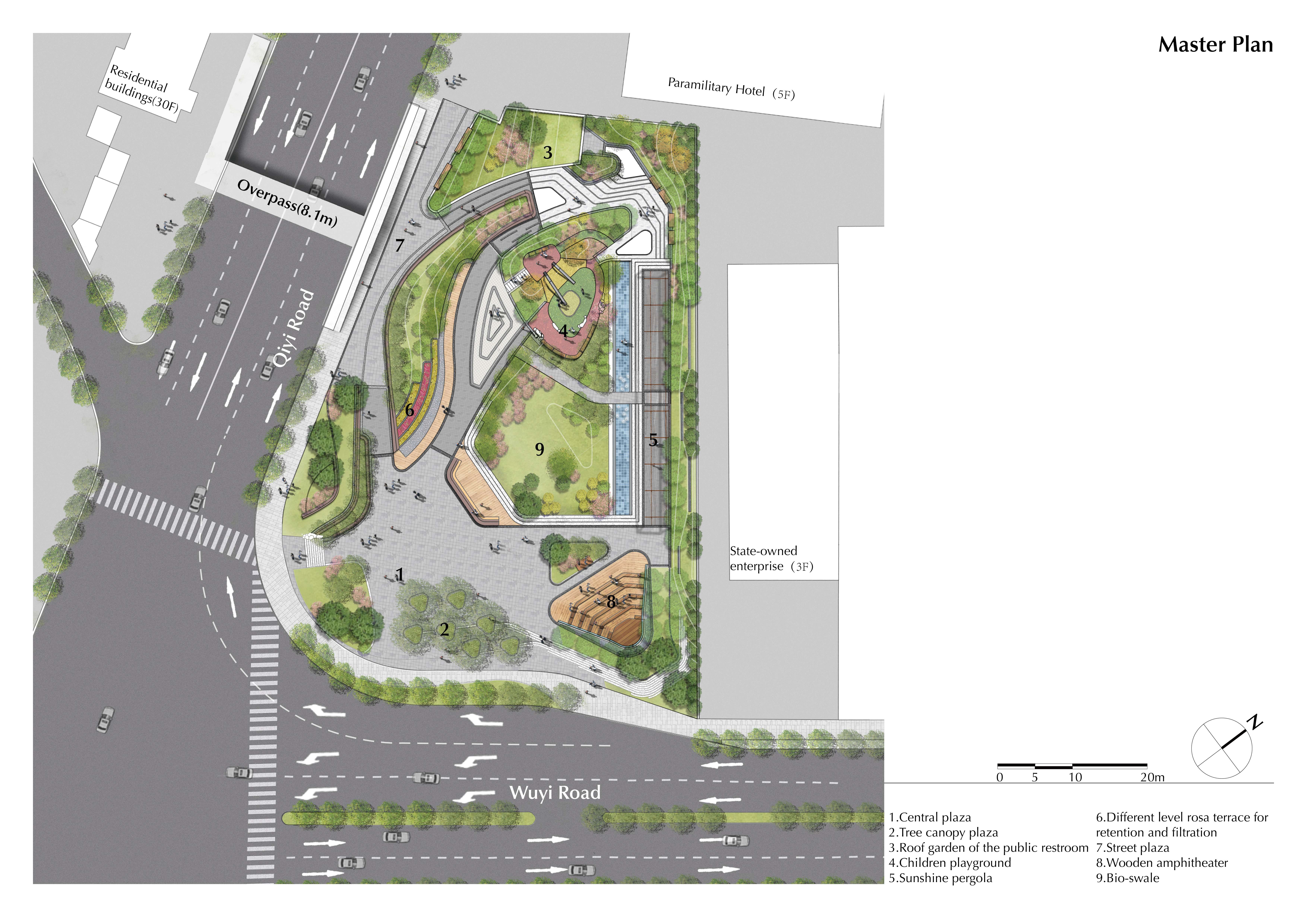
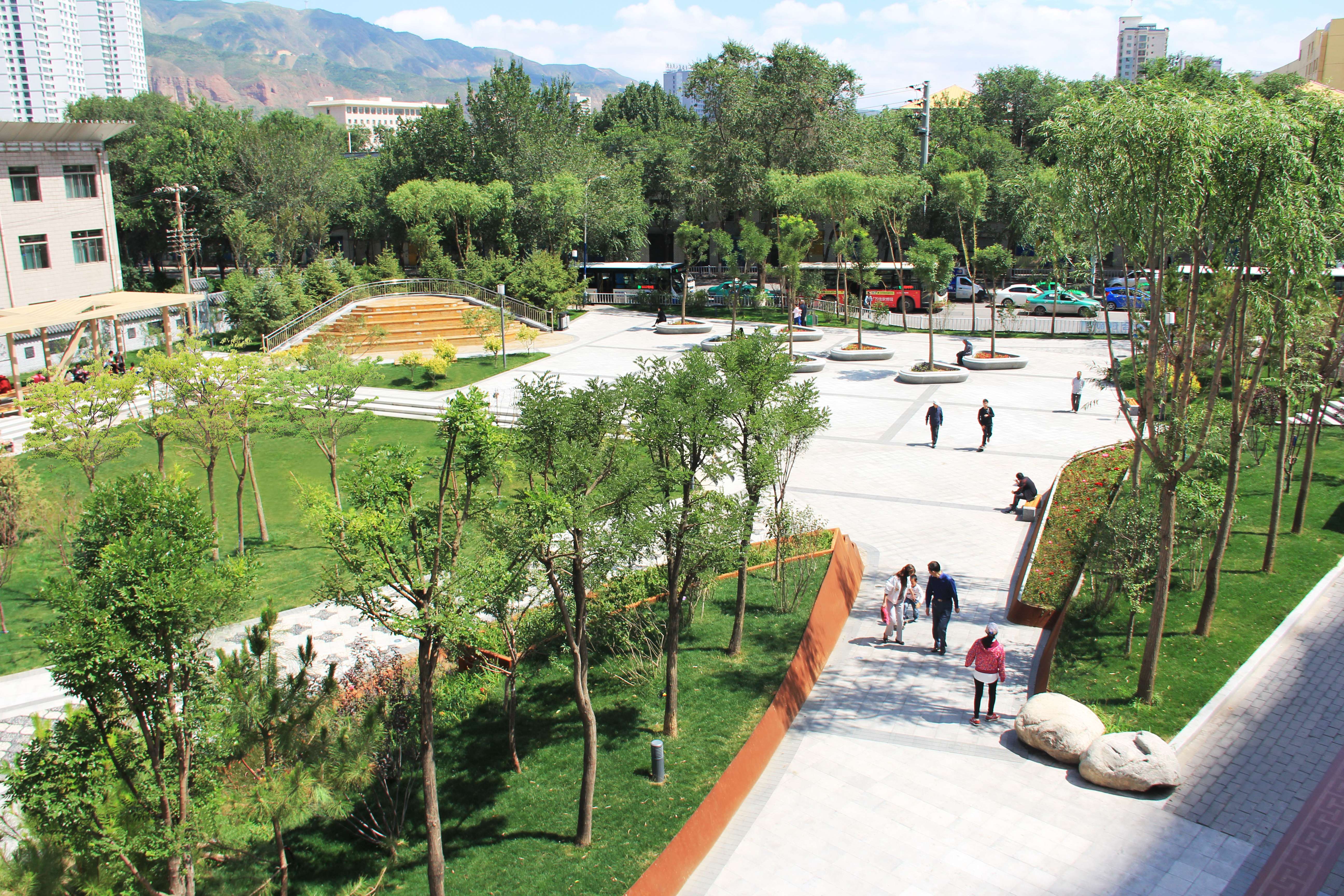
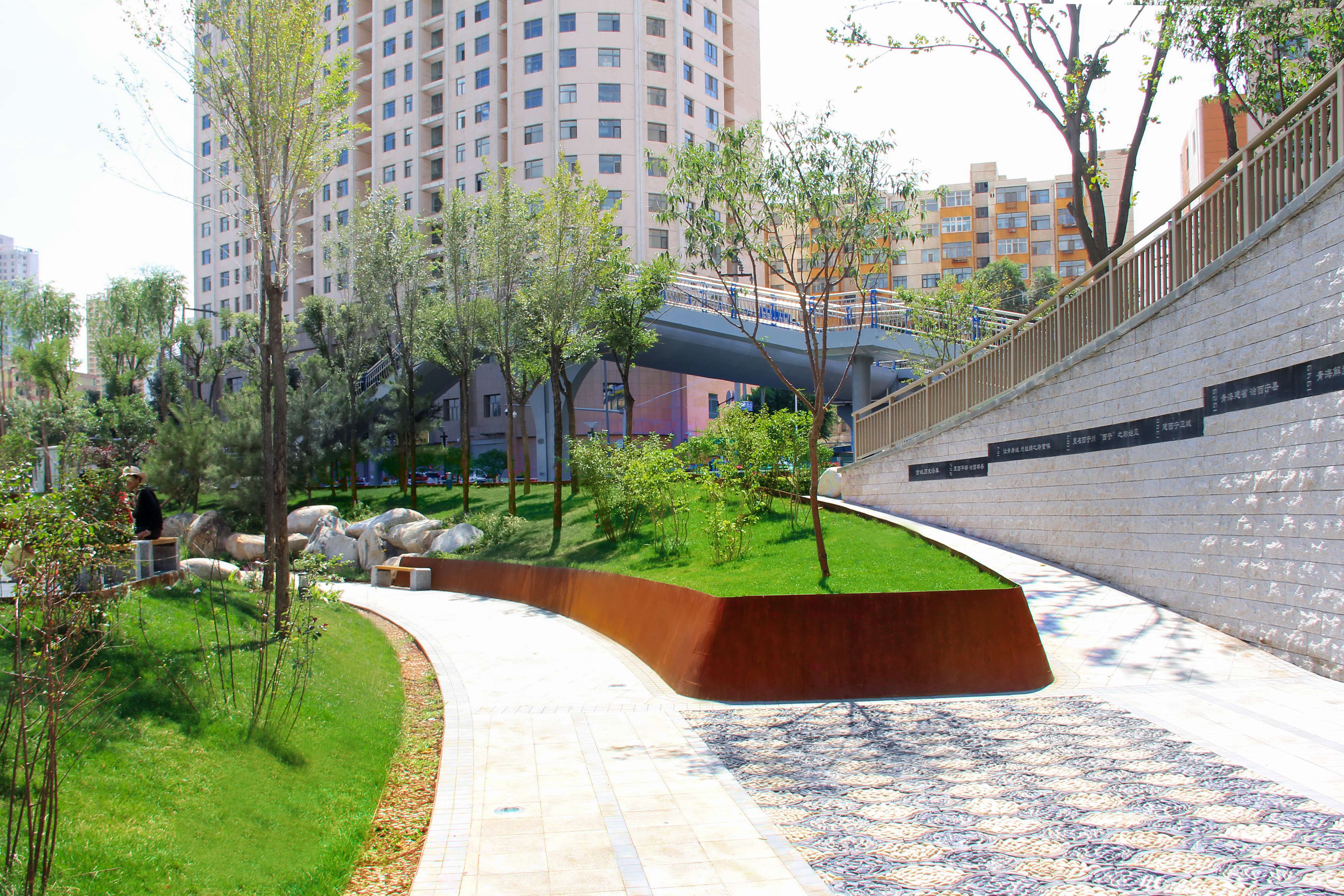
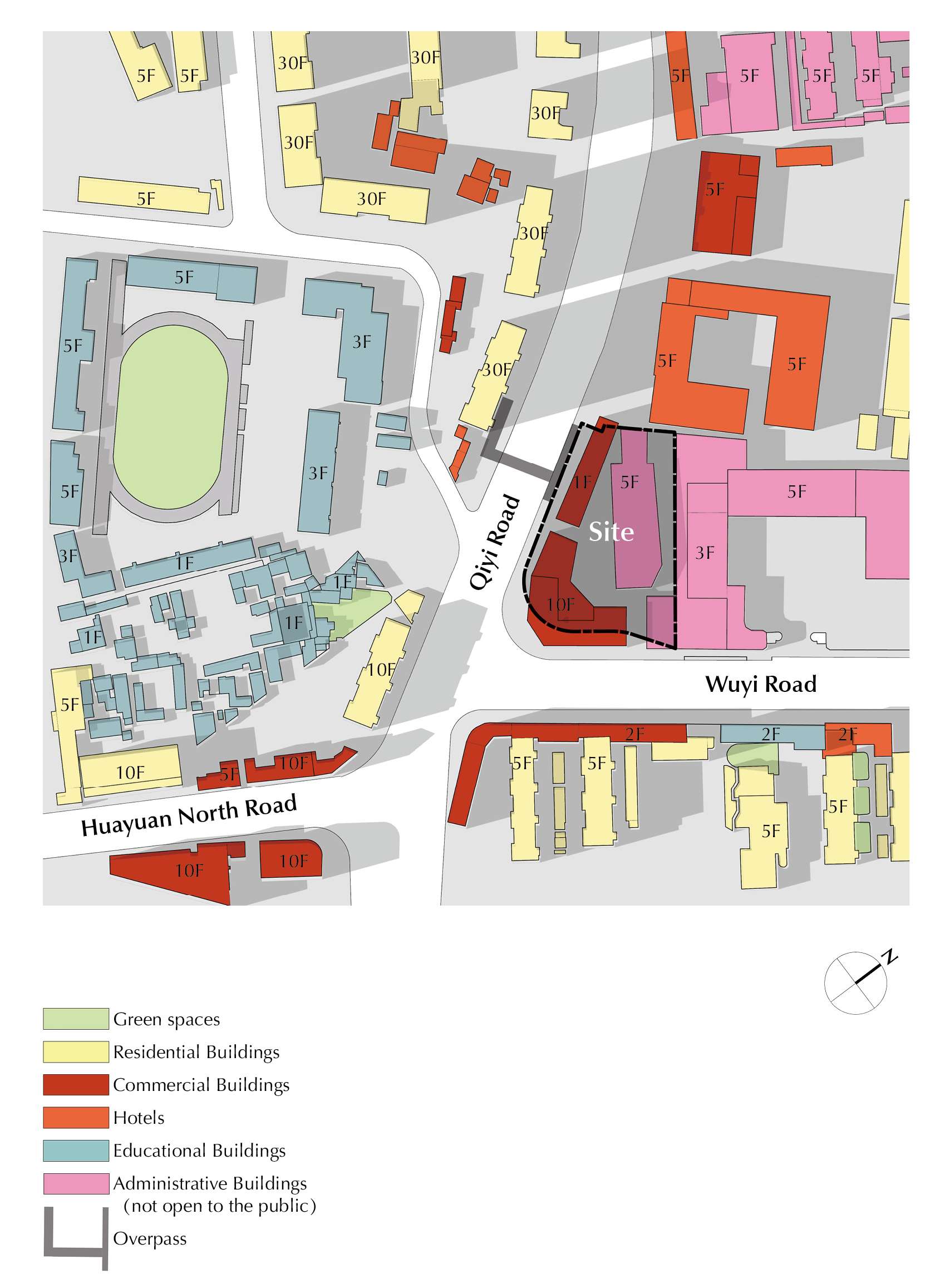
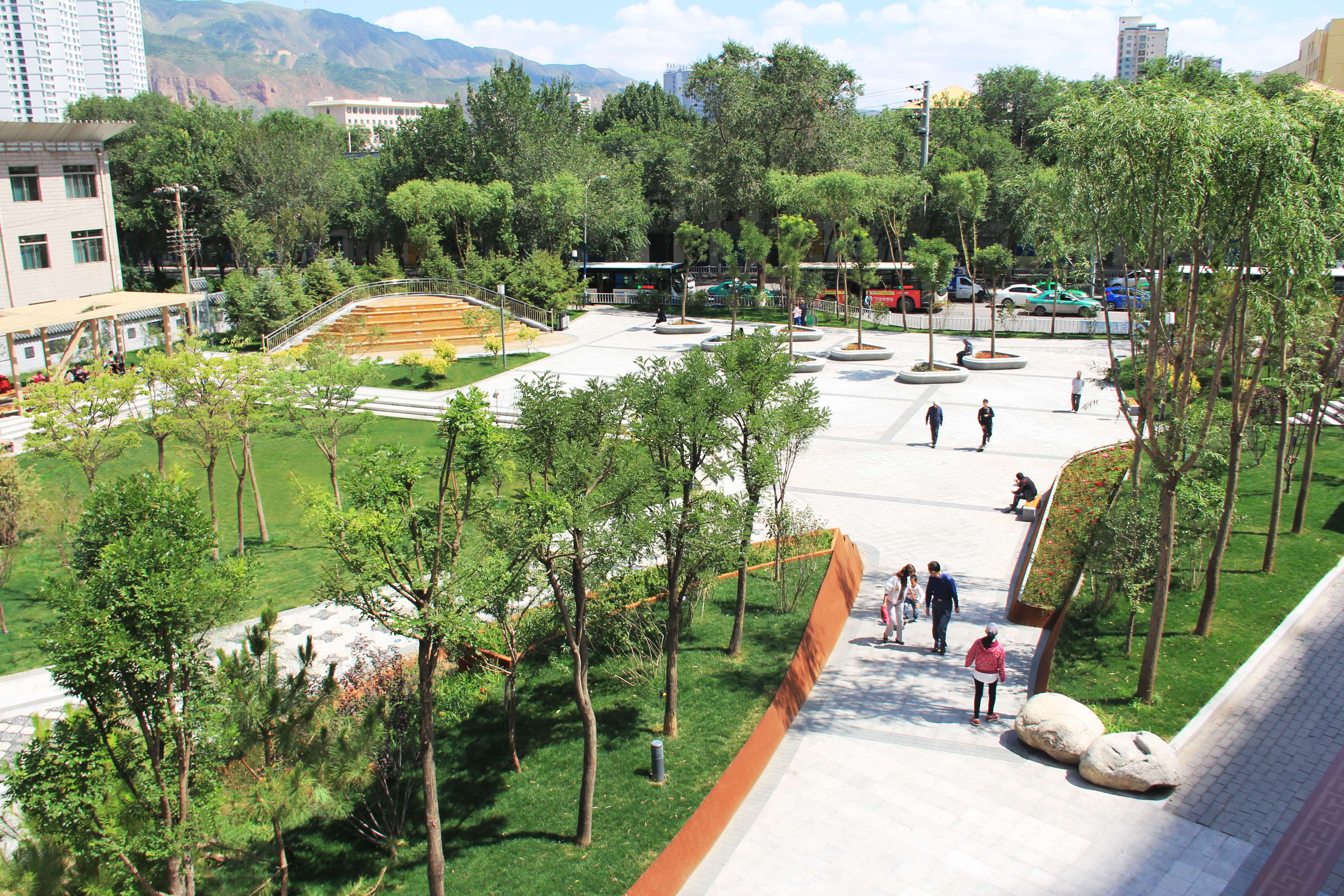

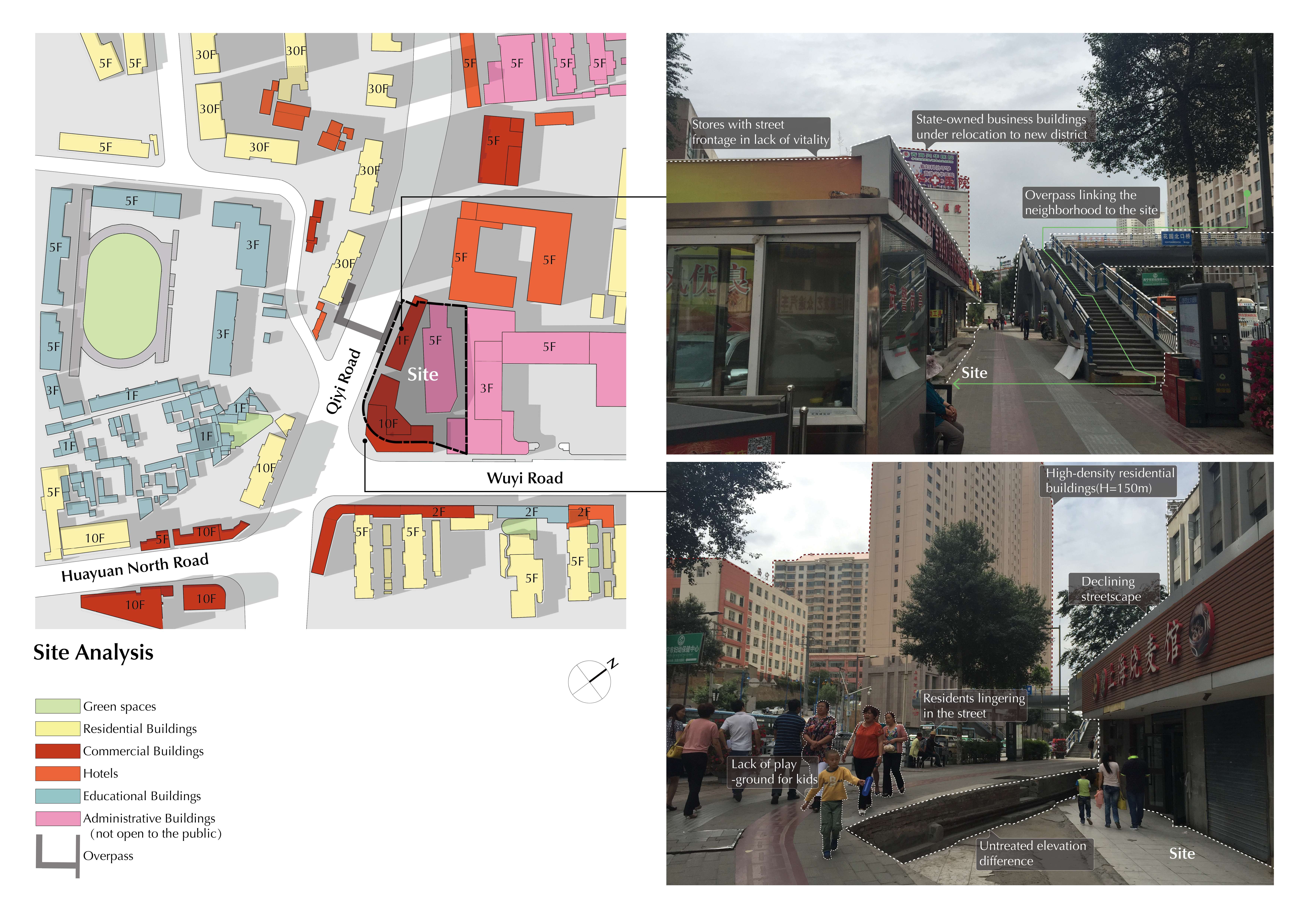
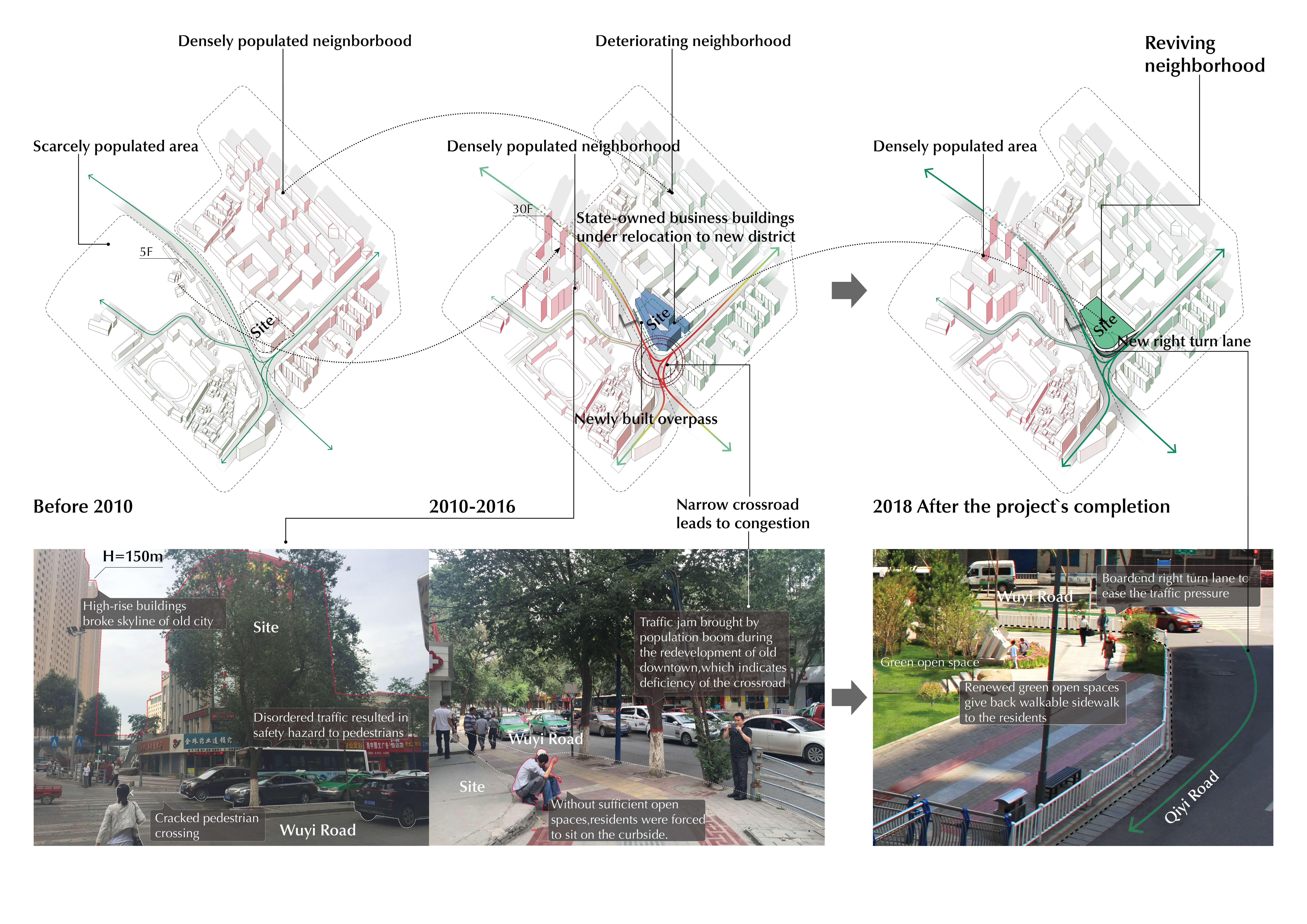
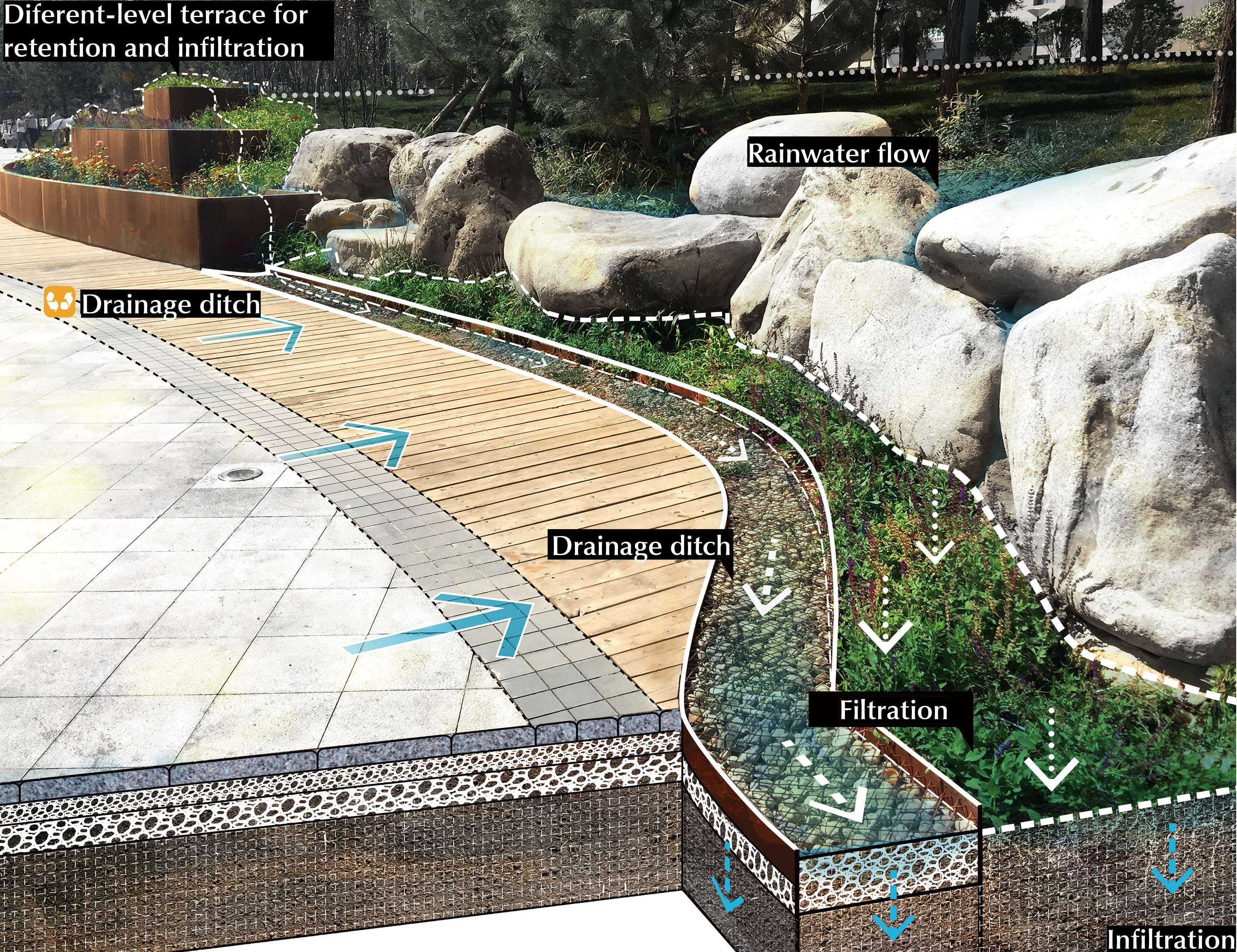
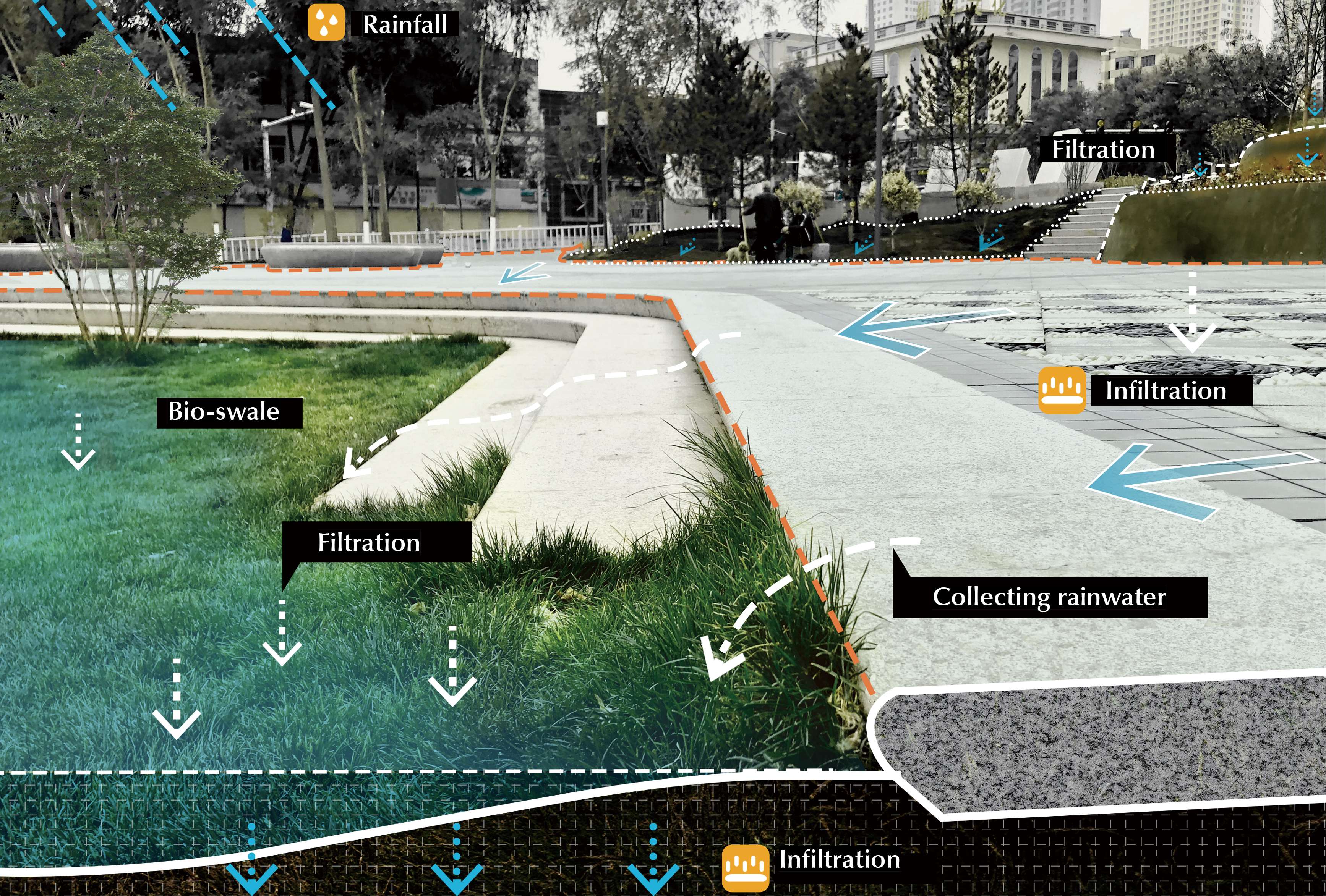
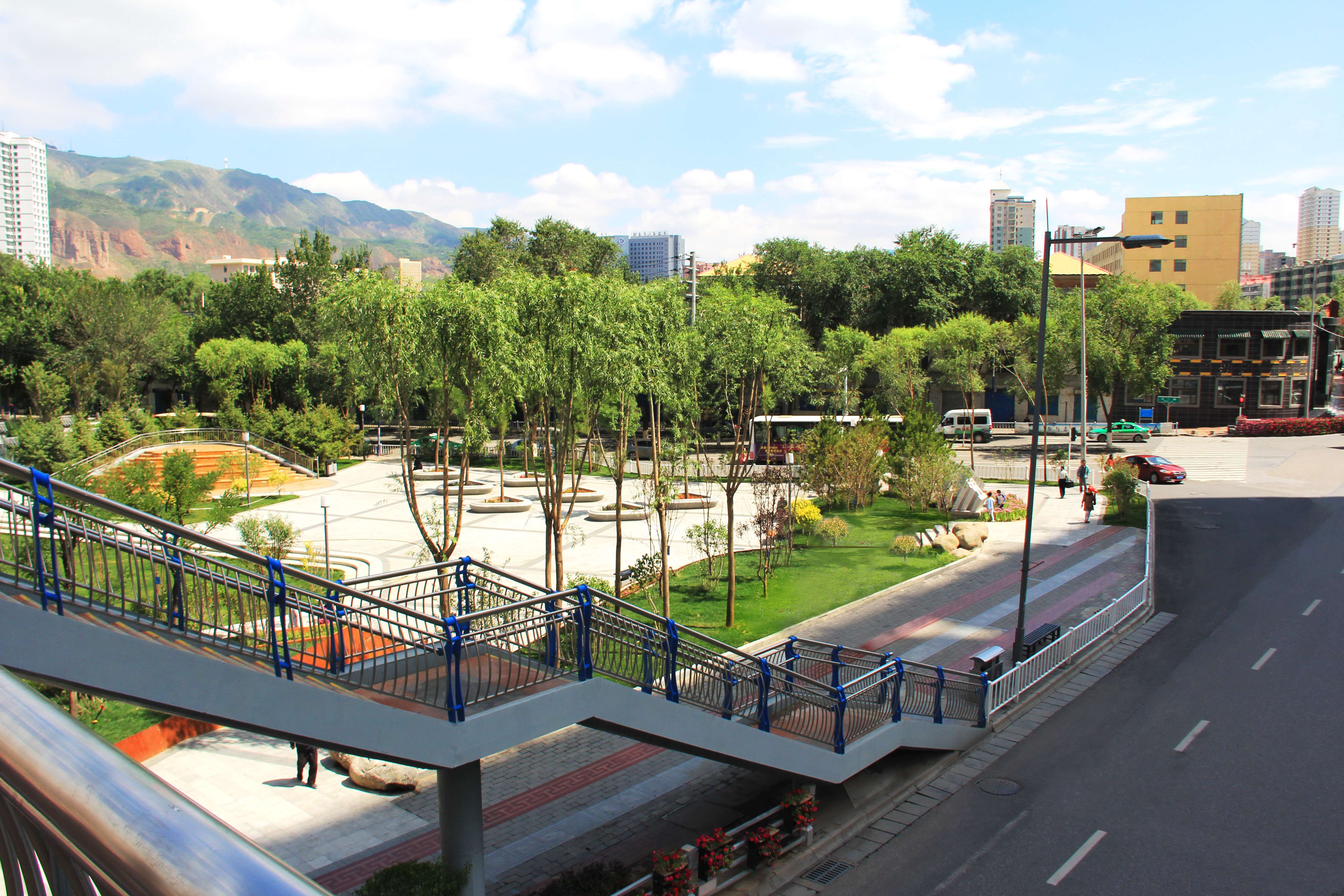
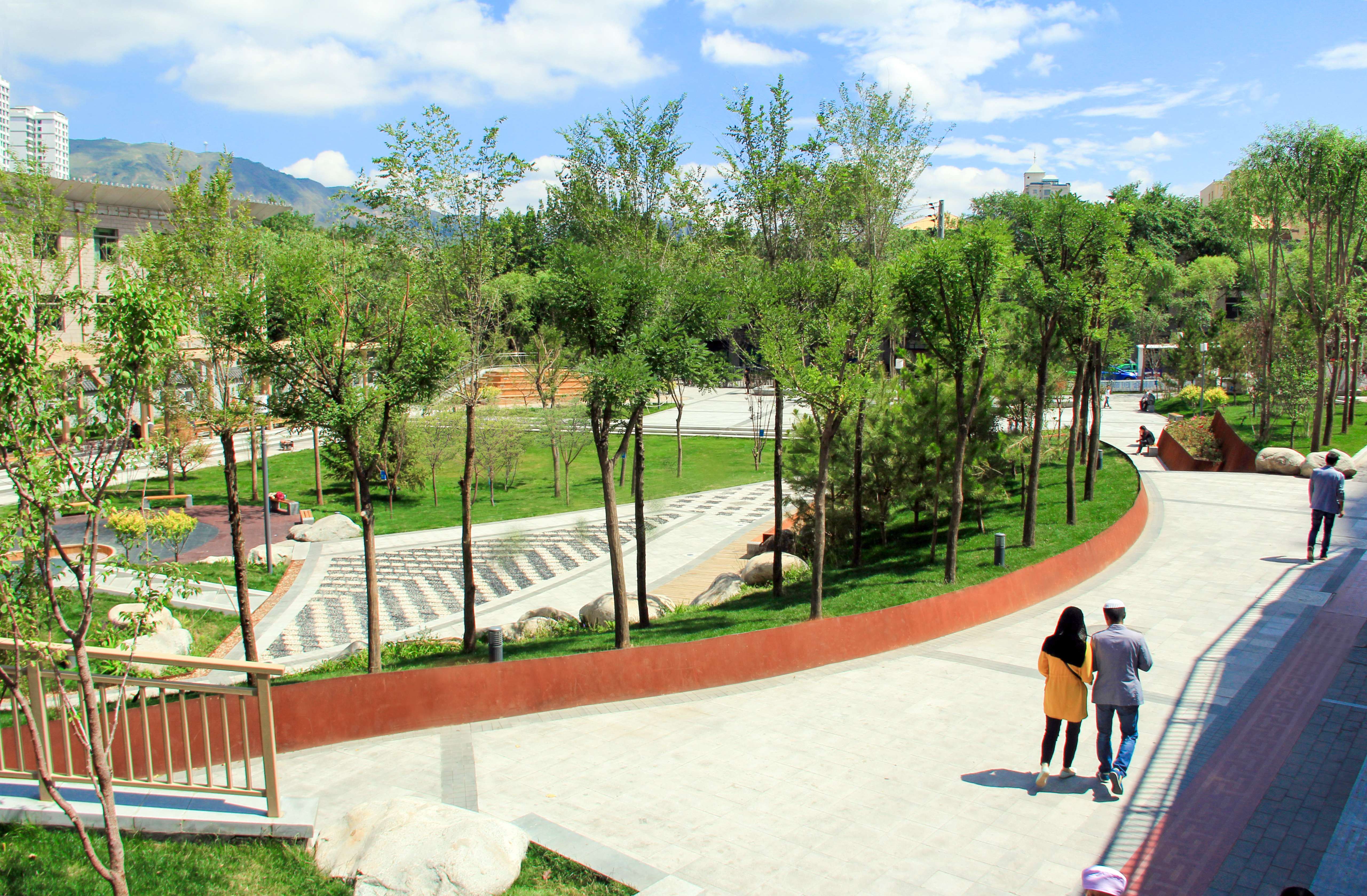
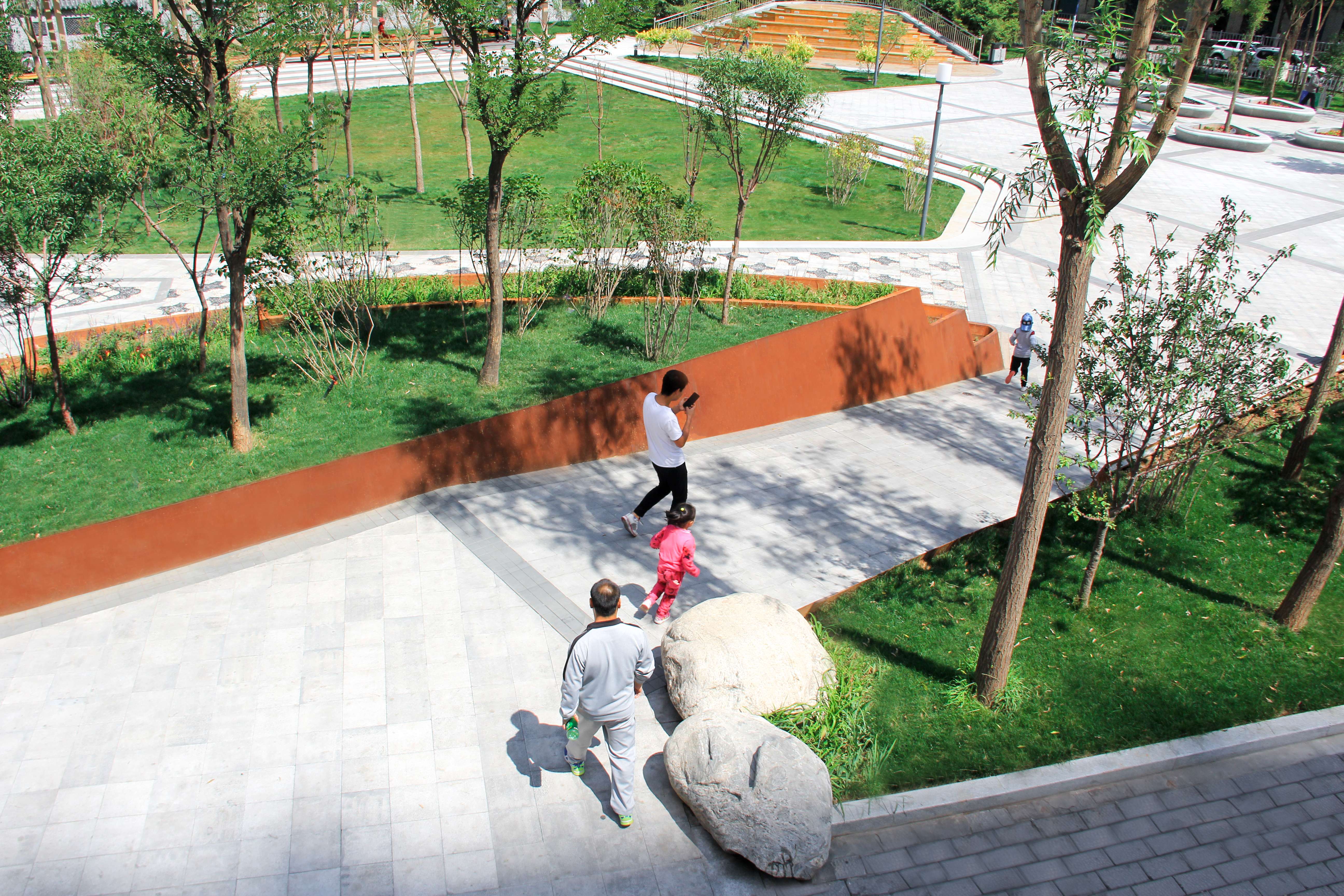
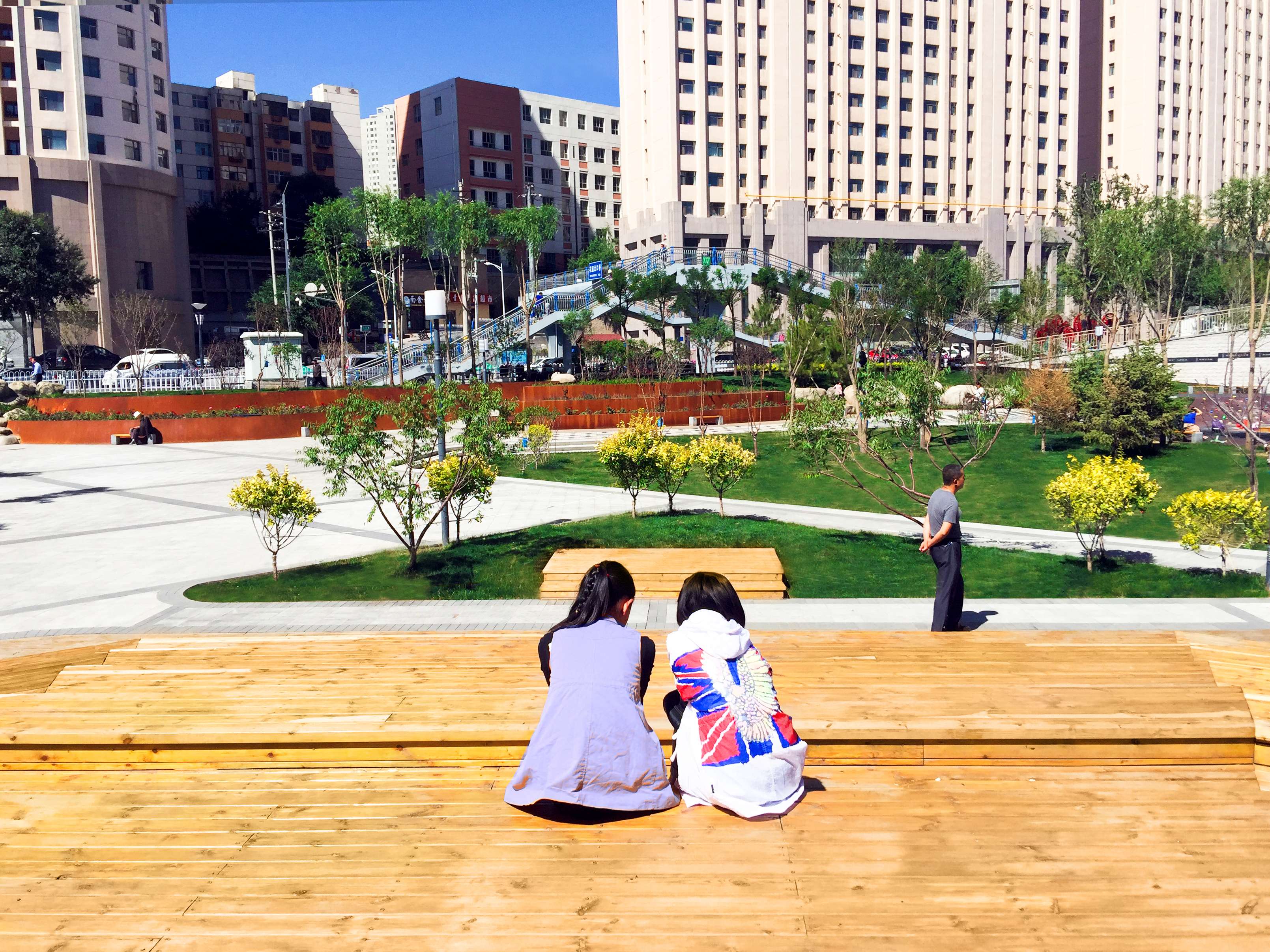
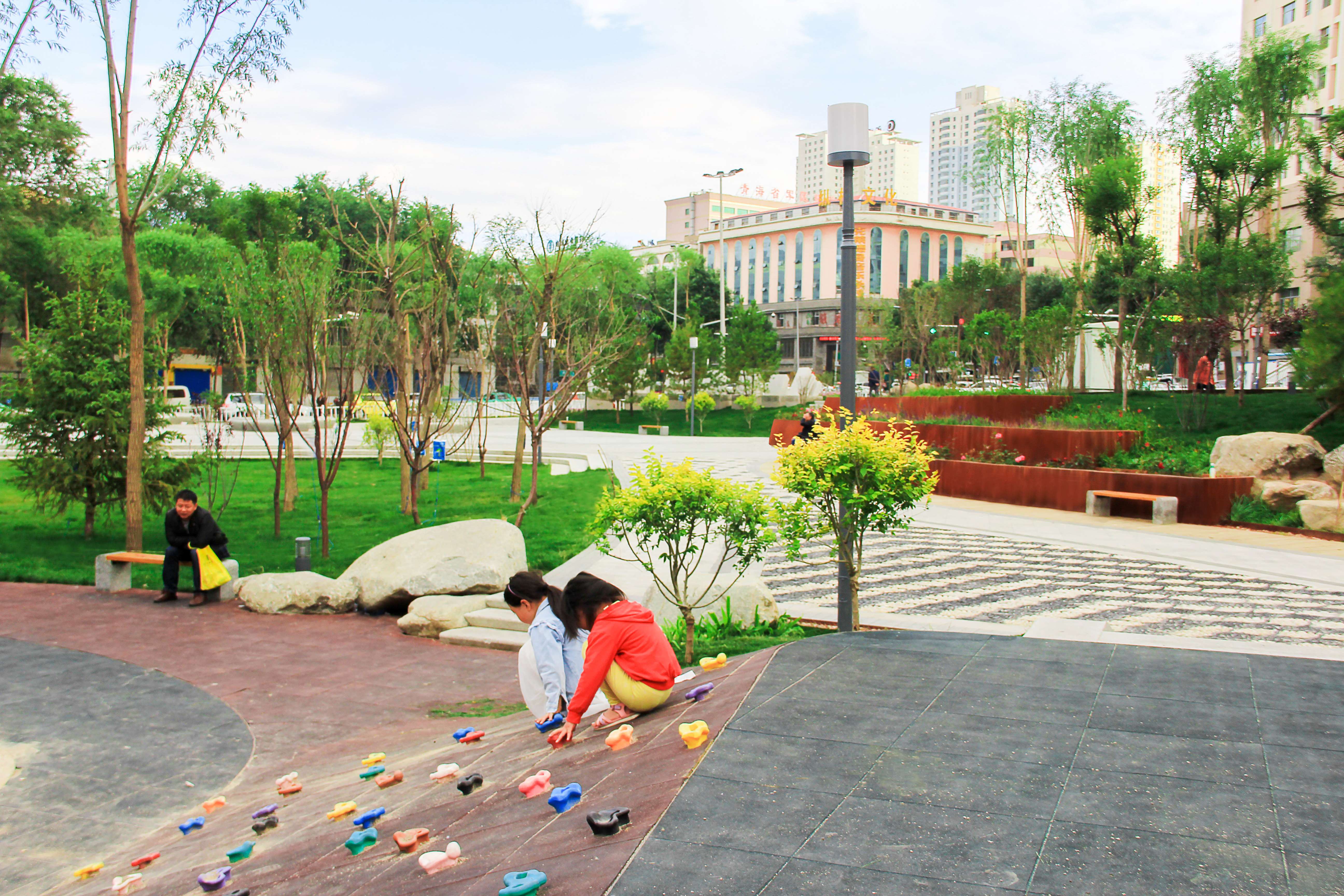
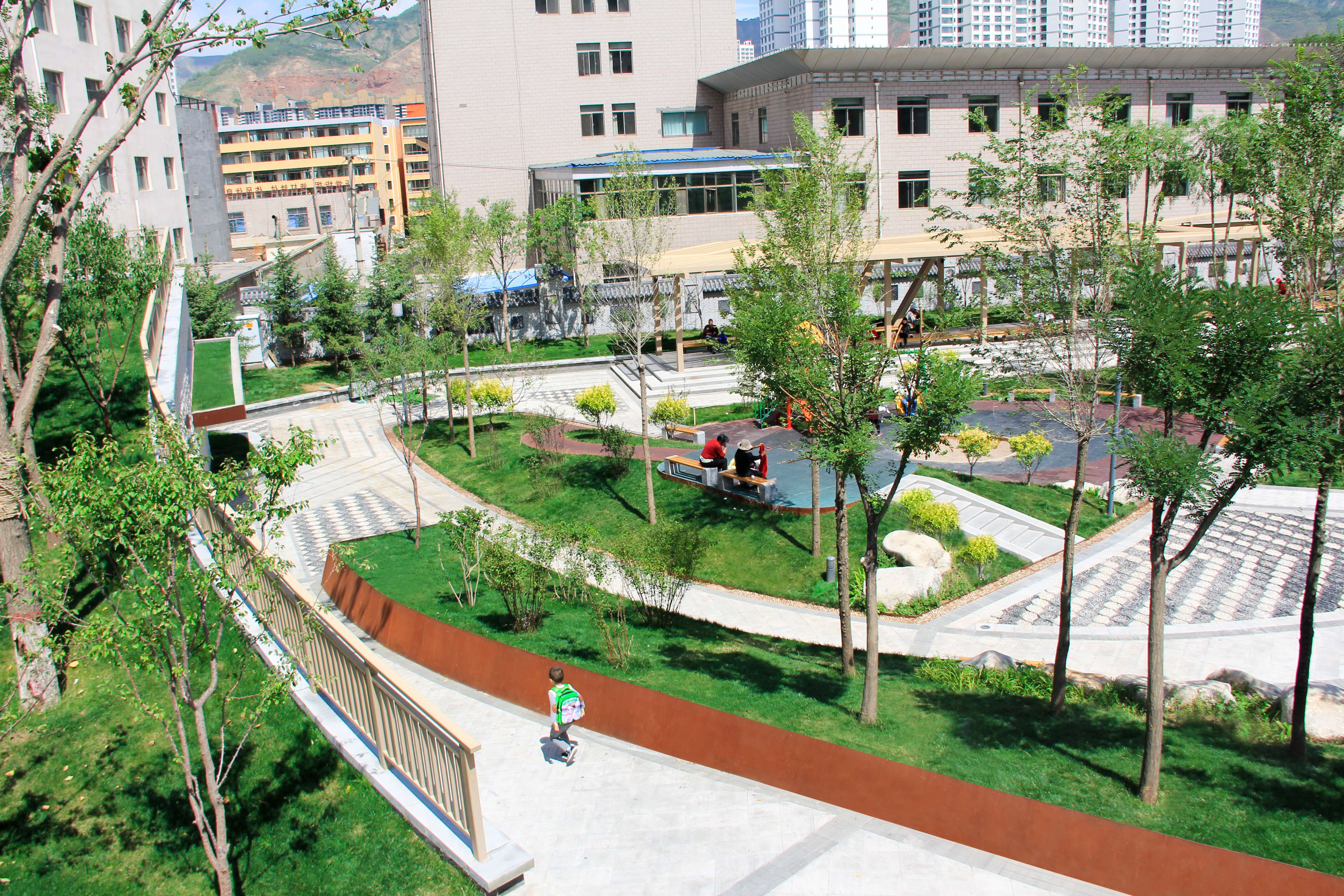
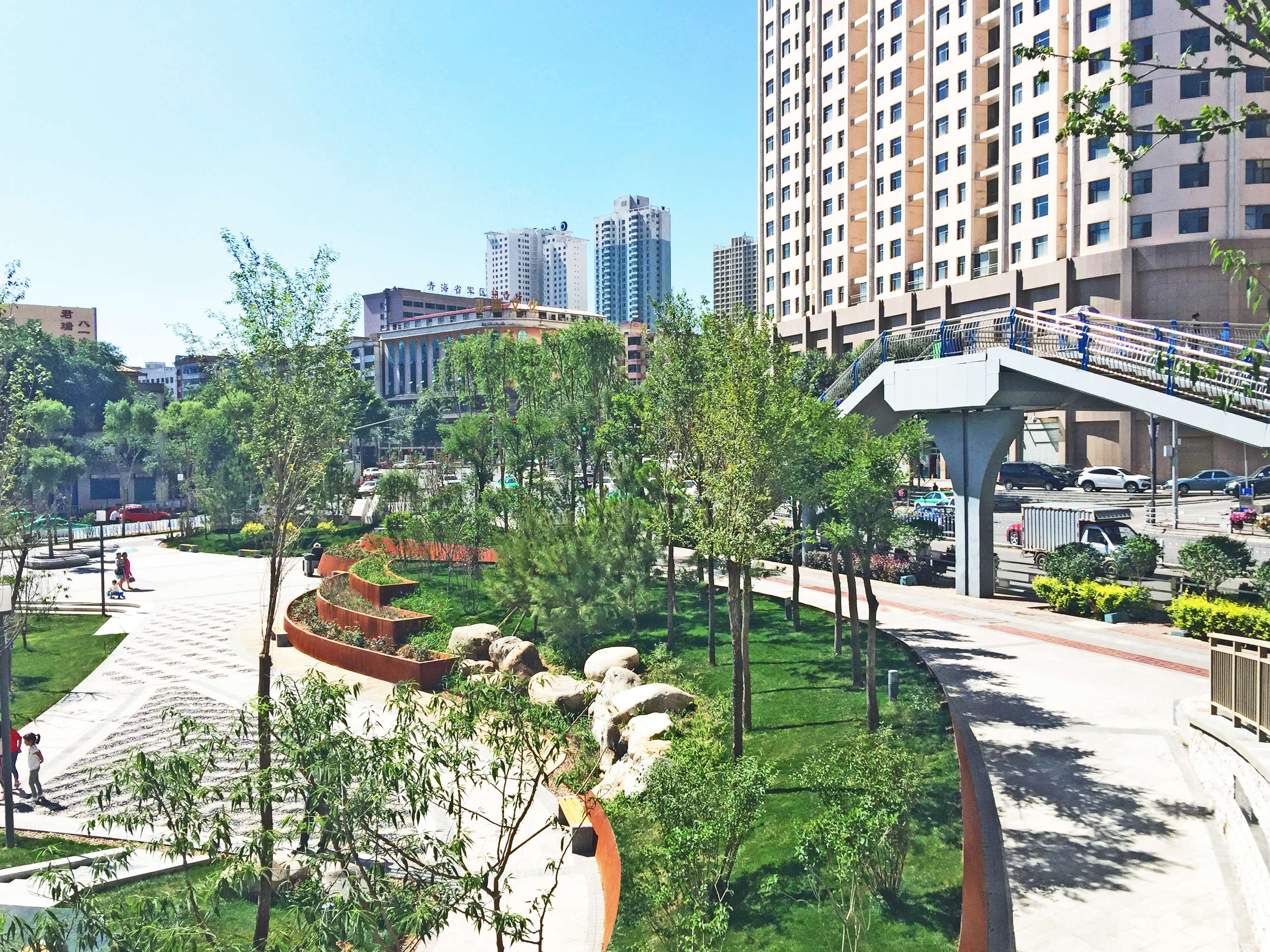
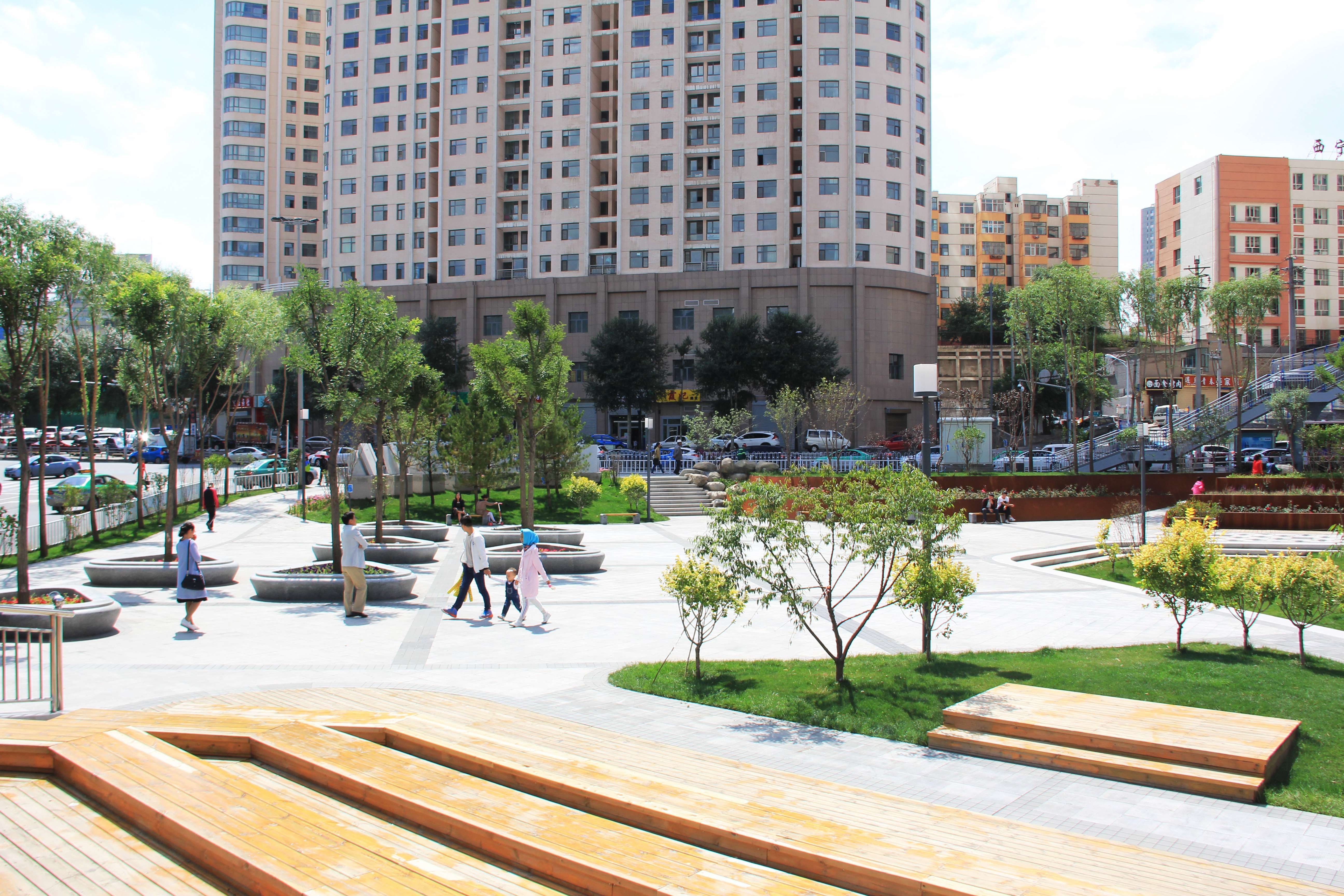
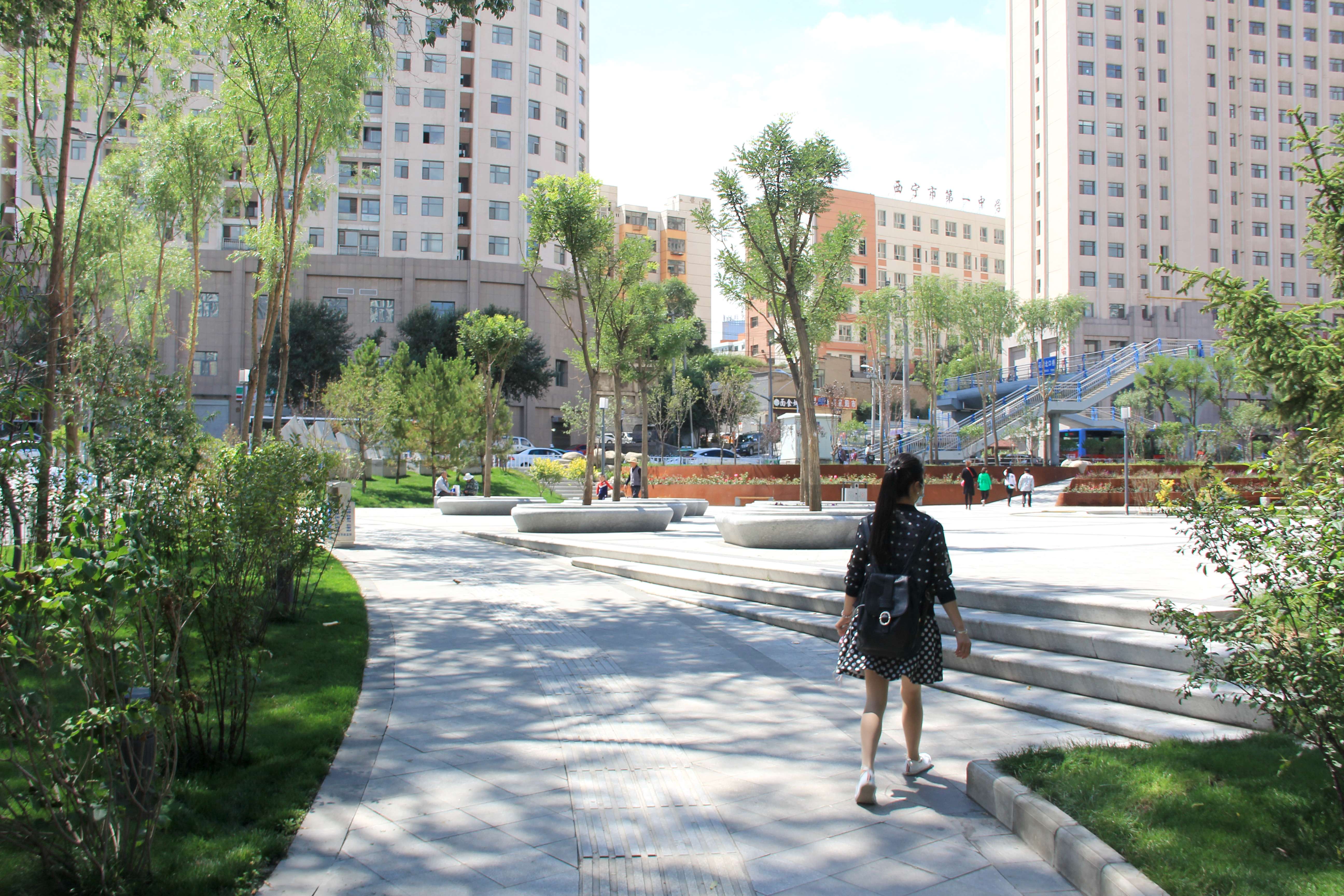
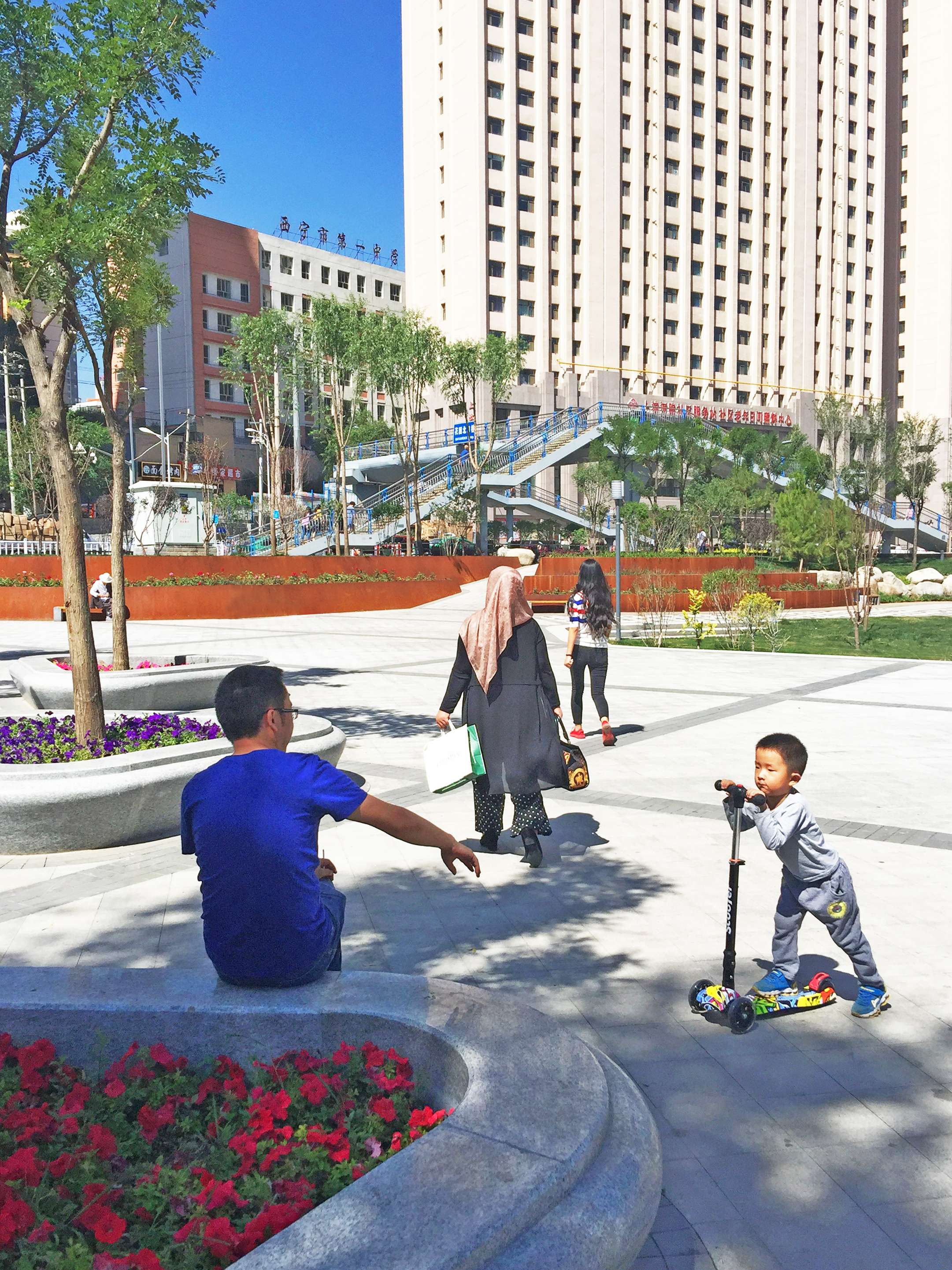
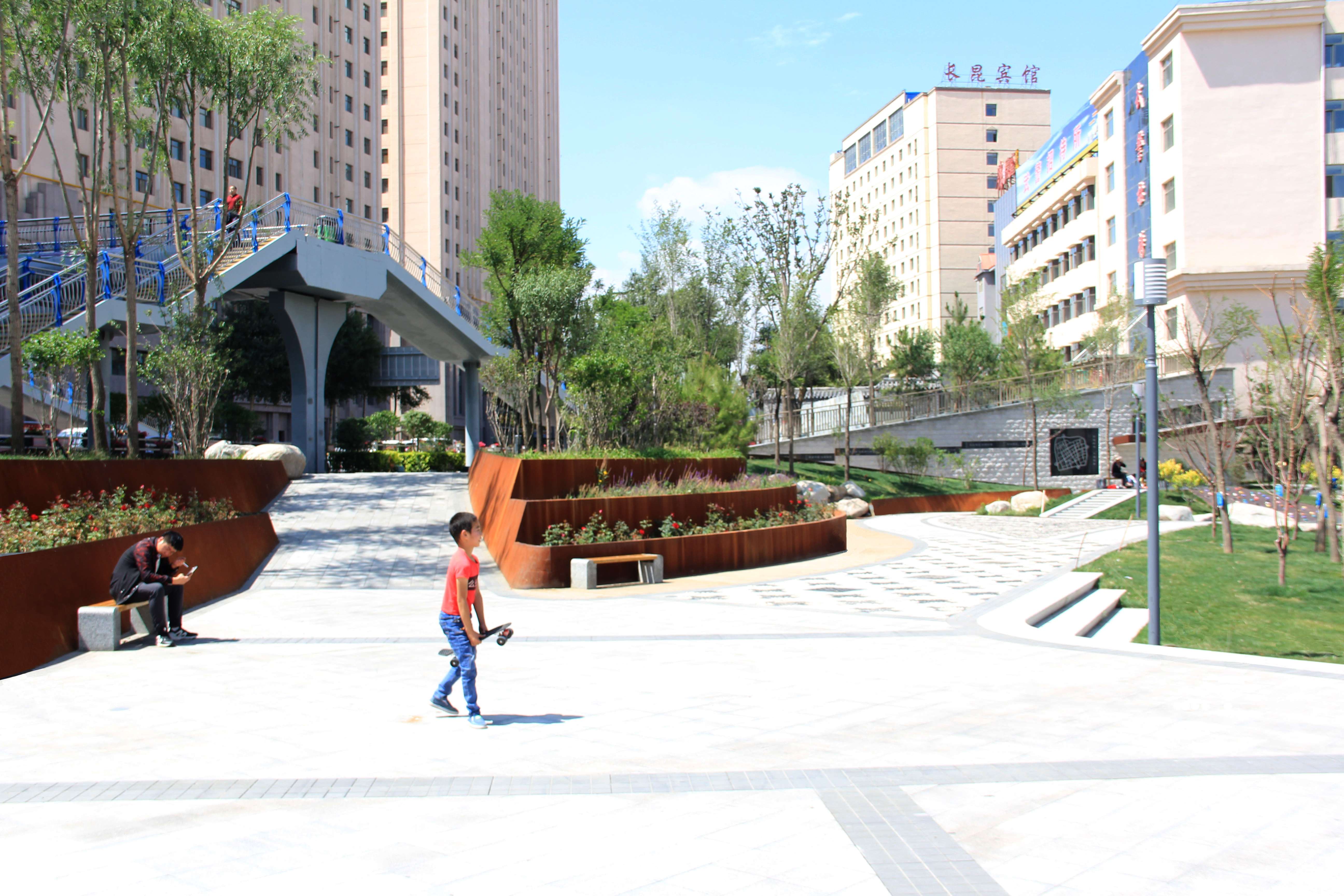
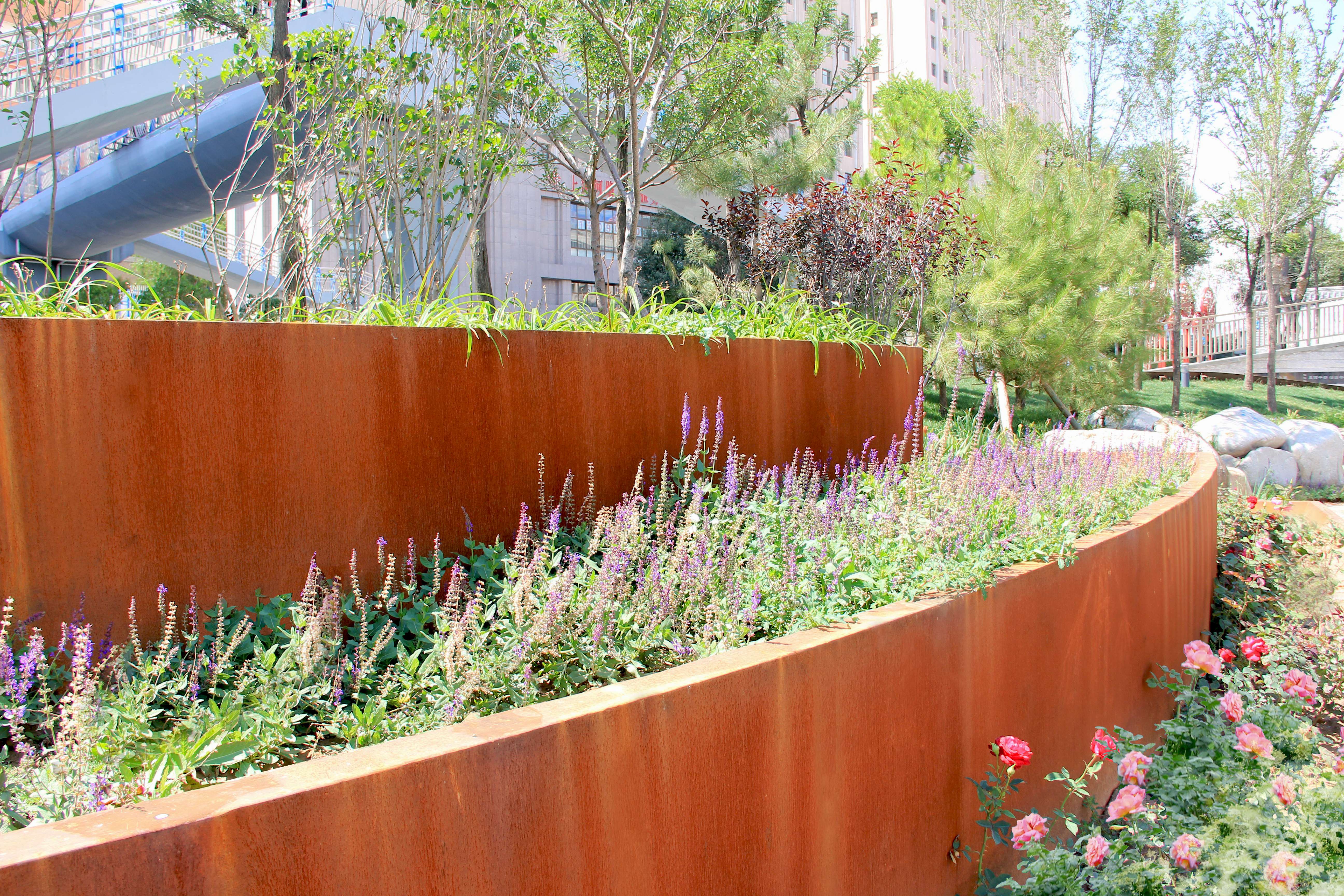
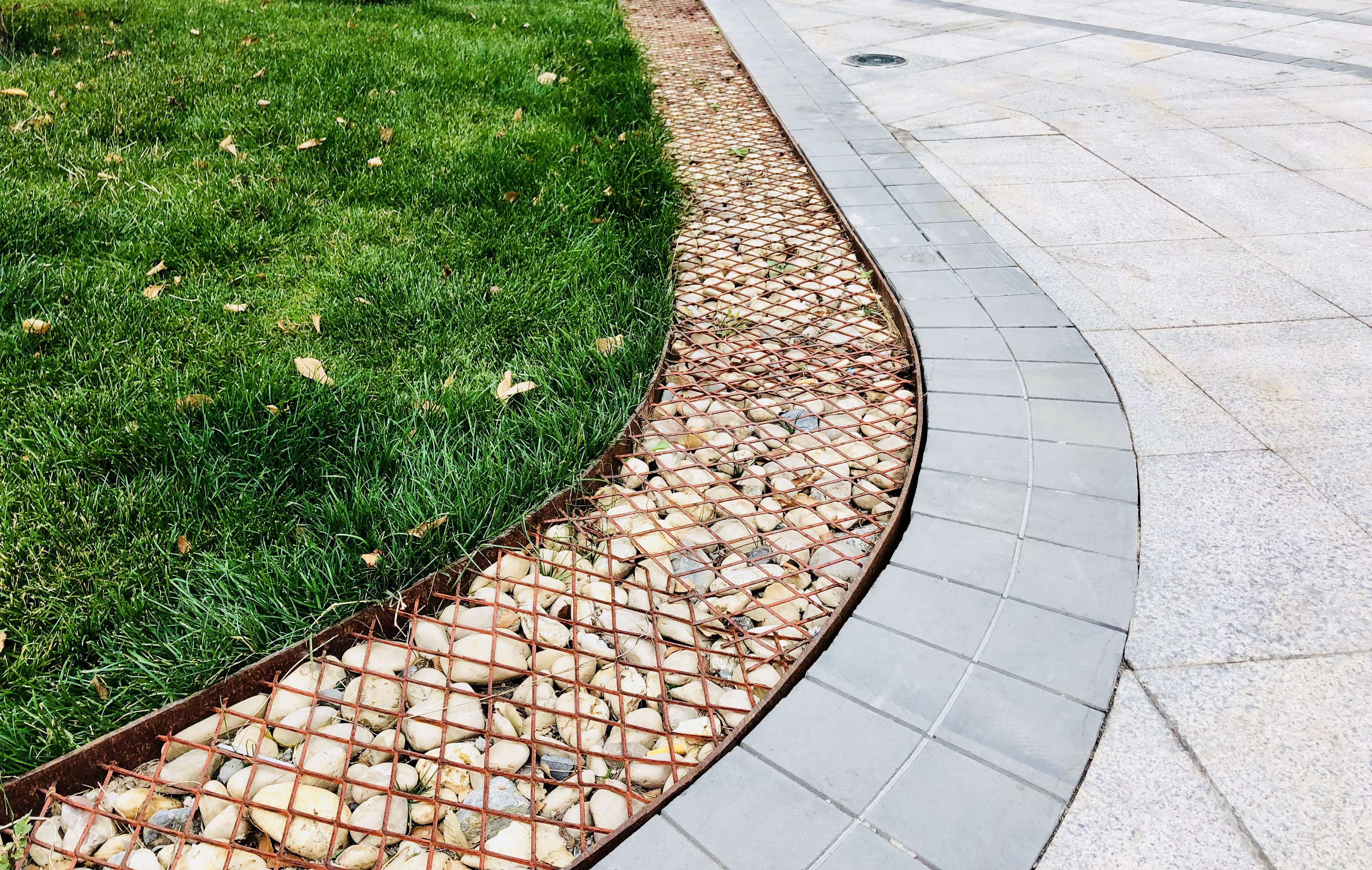
Niyongwei520
Green Open Space of Wuyi Road Crossing
Green Open Space of Wuyi Road Crossing
Project Statement
Green open space of Wuyi Road Crossing thrives in the high-density old town. Driven by the maximum economic benefits, high-rise buildings were constructed over the deteriorating neighborhood and spoiled the skyline. Simultaneously, the increasing population and traffic brought severe burden to the existed urban infrastructure. The extreme lack of green open spaces had deteriorated the living quality of the old town.
The site, surrounded by various types of buildings, was originally filled with declining buildings and state-owned enterprises. The municipal government and landscape architects succeeded in transferring the declining site into a significant urban problem solver. By bringing up the thoughtful design, the green open space serves as an integration of transportation and green infrastructure, as well as an impetus of vitality among neighborhood and urban hydrologic resilience. Landscape architects have taken the residents' health and well-being, pedestrian safety and water-saving demand into consideration. As a result of comprehensive strategies, the green open space excels at alleviating the traffic safety hazard and the lack of open spaces in the redeveloping old town. This brand new public space, which contributes to the harmonious relationship between various communities as well as to the improvement of real estate value, has distinctively reshaped the outdoor environment of this congested neighborhood.
Project Narrative
Background
Xining, the capital of Qinghai province, locates in the northwest part of China. The city symbolizes brilliant culture of China's western regions; however, it is still undeveloped and the downtown area remains ruined. Since 2010, the government has launched the construction of the new district-HaiHu New District in west region of the old town.
The site, situated in the core area of old town, survives in the intersected space between tremendous non-public buildings at the crossroad of two main traffic, Wuyi Road and Qiyi Road. Since 2010, the old town began its redevelopment, an increasing number of high-rise residential buildings (height 150m, 30F) replaced the original residential buildings (height 20m, 5F), which resulted in the leap of population density and destruction of the original skyline, were erected. As an outcome of population increase, the old transportation infrastructure could not meet the demand of excessive traffic which results in severe traffic congestions. Meanwhile, the residential area with high building density but extreme rare green open space could not satisfy people's needs. On the other hand, the previous constructions in the site, a stated-owned-enterprise, have been included in the relocation project to the Haihu new district.
Opportunities
This project was given priority to re-evaluate the urban spaces in urban regeneration. In 2016, the local government, with the goal of relieving the traffic jam, decided to widen the crossroad in order to open up sufficient space for a new right-turn lane. Simultaneously, the state-owned enterprise "buildings have been removed to the new district. All of these changes provided the site with an advantageous chance to be rebuilt as a new urban green space.
Target:
Opening up an Energetic Urban Green Window
After its rebuilding, the green open space of Wuyi Road Crossing becomes the only open green space within 2 km around which plays an important role of improving
spatial quality in its adjacent downtown area. Therefore, the government and landscape architects co-operated devotedly to transfer the declining site into a crucial
urban problem remedy. The government balances the interests of different stakeholders, some of whom insisted the site shall be rebuilt for new commercial uses. The
project integrates the old overpass, the widened Wuyi Road crossing and the need of streetscape improvement into the delicate design strategies that gives the site
features such as distinctive cultural characteristics, varieties of landscape and the effective ecological solutions. The project makes every effort to rejuvenate the
neighborhood by opening up a green window in intensive downtown area.
Relinking the Traffic: Giving back Comfortable Walk Experience to Pedestrians
The 4273-m2 green open space is located at the crossroad between Qiyi Road and Wuyi Road. This project rebuilds the pedestrian walking system by broadening the right-turn lane to achieve a smoother traffic. Linked by the overpass, the green walking system and its adjacent sidewalks are well connected to the neighborhood.
The scheme was conceived as a combination of vigorous arcing gestures and simple linear features that accommodates movements from the sidewalks to core area of the site. To tackle with the 3.5-meter elevation difference between the sidewalk and the inside, the project applies elegant ramps, steps and planting beds at the boundary. The ramps complying to the existed evaluation, are emphasized by flexible edges made of vivid rusted steel states, which defines the green spaces and enhances accessibility between the central plaza and surrounding sidewalks, making the space distinctively pedestrian-friendly to the surrounded communities. As a part of the residential commuting routes, the site creates efficient transportation system in the neighborhood. Moreover, it notably promotes the walking safety.
Enriching the Spaces: Serving Residents and the Community
The design scheme seeks to create new public downtown green spaces—one that is rich in details and visual interest, that recognizes the regional historical heritage, while provides welcome relief and contrast to the dense urban fabric surrounding the site.
To provide residents with versatile spaces for activities, the project contains a playground with abundant Children playing equipment, an amphitheater with wooden pavement and a 40-meter-long sunshine pergola in its north. The wall of the earth-sheltered public restroom, built with the archaic bricks, is carefully designed to be a recognizable landmark which refreshes visitor's nostalgia of the ancient walls in Xining. The roof garden offers visitors opportunities to grasp a comprehensive view of space.
This garden provides a precious social space for locals in expectations of basic open spaces for reading, sunbathing and getting in touch with nature. It has created a major drawing for downtown workers, student groups, and residents living nearby. Adolescents, who were once inclined to loiter in the Internet bars, start spending their leisure time in a healthier way. The green open space opens up a safer attraction for children. The beauty of the green space isn't simply a destination, or a place provides shady spots to eat lunch: it's also a crossroads — a welcoming, accessible concourse where people's paths converge. With high-quality seats and infrastructures, it gathers residents of different ethnics-Han, Hui, Tibetan and so on. The green space enables the local people to enjoy easeful life. Furthermore, it promotes the harmonious relationship in the poly-ethnic community and brings the long-term benefit to residents1 sense of safety in this deteriorating old town.
Embracing Nature: Adapting to Climate by Resilient landscape
The design in Wuyi Crossroad thoroughly considers the climatic characteristic that rain and heat over the same period and the intense rainfall in summer. The project applies comprehensive methodology to improve the resilience. The rooftop garden, pebble drains, plant filter tank and different-level terraces for biological retention are combined into the integration of natural process of rainfall infiltration, purification, absorption and storage. Through the low- influence management, the project attaches a lot of importance to the demand of water-saving and seasonal rainstorm regulation. Based on this, the planting design is covered absolutely by native plants, Salizmatsudana, Sophorajaponica, Rosa chinensis, Ulmuspumila, etc. to improve the resistance stability and also ensure the long-term effect for all seasons.
Reshaping the neighborhood: The Open Green Window in the Urban redevelopment.
Many advantages of this green open space are significant. Being the vigorous green infrastructure in the process of urban regeneration in such a high- density neighborhood, it creates a superior public space to increase the greening rate, enhances the accessibility of street and strengthens the communication among residents. Most importantly, this design, directed by the concept of sponge city, rebuilds the resilience to minimize its negative effect of heavy rainstorm and drought. In addition, the charm of native plants, local culture and the importance of regional landscape is richly conveyed through this open green window.
The reshaped green space is an important example of how a crowded and shabby site can be transformed and knit back into the urban fabric in a manner that positively contributes to the urban open space network. In addition to the wide variety of community benefits already noted above, the simple sight of parents and their children enjoying the delight on a daily basis is certainly important measure of its worth. As urban densities continue to increase and green public spaces become exceedingly unavailable, it is critical that landscape architects could realize the value and opportunities for every available site and extract their potential to become a vibrant and valuable component of our public realm.
